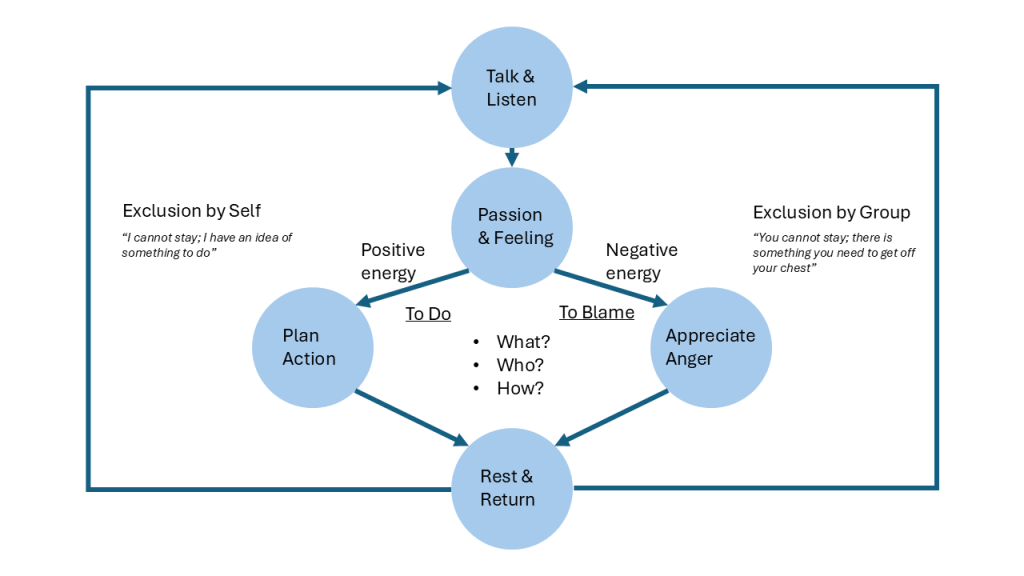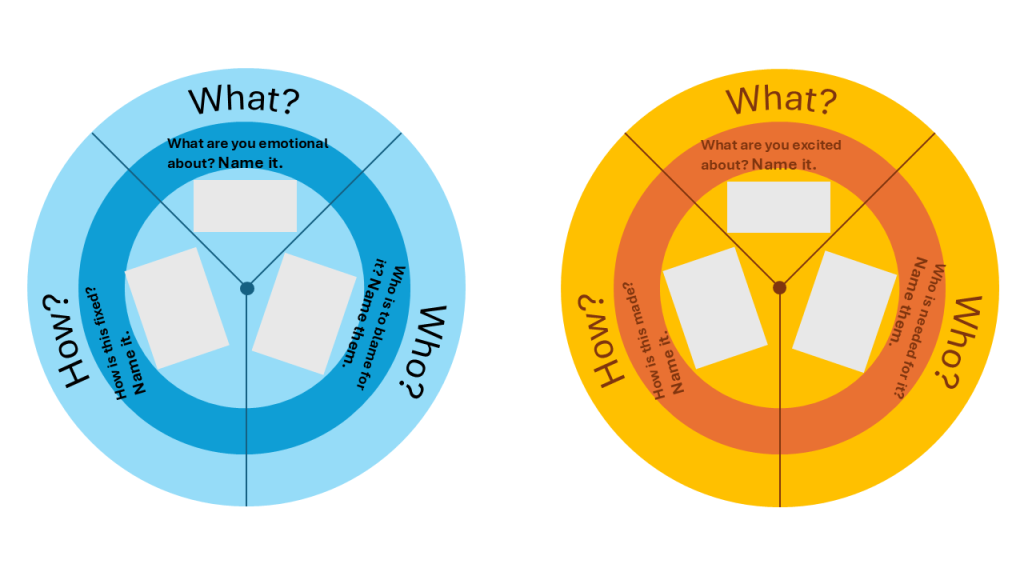This is a post about a possible public event in Stroud.
I was talking to Madeleine Bunting today about Civic Assemblies and community conversations. We discussed how hard this is and what barriers there are to meeting and talking about subjects of shared interest. The problems of both finding a stable foundation of reality and truth and maintaining conversations with respect and meaning.
There are too many reasons for why this kind of event is hard nowadays. Yet we need to try or else we spin apart as a society. Neither sharing time together nor listening to new and alternative opinions.
Care
Any discussion event needs a theme. Something at the centre for people to talk about and find gaps and spaces for exploration and argument.
Care is an interesting word as it has many possibilities.
There is the direct sense of care for a person; yourself, a friend or family member. The wider sense of social responsibility: for a natural place or an artefact. The emotional and personal choice: to care or not. The institutional and bureaucratic duties: to provide assistance or to explain why not.
Care is within us and all around us. It infuses what we choose to do or not to do.
The existence of care is undeniable. It is a shared foundation.
Care is also something that creates very great difficultly for individuals, communities and organisations. What is done or not done. Who is cared for or not. Who performs it or provides it. Who pays or who volunteers.
There can be a series of events in talking about care. It is a small word with so many reasons to both talk and listen to opinions about it.
Event format
The simplest format is best.
An invitation to a place for a couple of hours with the offer of a talk by somebody with an opinion based on research or lived experience, some food and drink and spliting up in tables to chat and discuss ideas and opinions.
Time spent together, time spent seriously, time spent socially.
Learning through talking
The event is themed around care and formatted around food and conversation. Yet this is also about offering a space to learn and improve.
There are multiple methods for structured conversation and debate and it can be useful to make them explicit so people can learn how to talk and listen when discussing ideas with people they don’t know and people they may disagree with.
Conversations with care is thus about providing a space for trying out how to be present together when disagreement is possible and people want to learn how to have that kind of conversation.
Thus there needs to be more explicit rules and ideas about how to chat. That can seem intrusive or even restrictive but communal conversation is founded on shared rules of behaviour. Those rules change over time but they always exist in any group.
I already have materials from a number of workshops on non-violent communication, structured deliberation and codesign that are relevant. Helping peopole see the structures and tools of conversation is important. In time, there is also the ideas of learning about rhetoric and logic that may help too.
Relieving tensions
I listened to a story of a public event that fell apart when it was disrupted by people who spoke only of their interests and blocked conversations by other people about the topics the event was supposed to be about.
There are issues of preparation and facilitation in that story but I think it’s more important to look at how to work with people who bring negative emotions and disruptive agendas. How to engage with them without getting sucked into a cycle of abuse and violence.
Strong emotion is something that people can find hard to deal with in the middle of a conversation. It is where active listening skills and other structured deliberation techniques can fail. The processes are content-based and the additional layers of emotion can be outside of the techniques taught.
For this reason, there needs to be an explicit emotional release valve that is available to individuals and groups. It exists in a training environment to extract people from group converations where passion and feeling appear to have become so heightened that discussion is proving impossible.
This diagram is a loop of exclusion. It is a bypass valve. It can be viewed as a failure but it is more about enabling people to learn how to hold more powerful emotions and difficulties over time. The valve may be used a lot in early events but as confidence and skills increase, both individually and communally, then people can stay in as the group has learnt to work with such emotional energies.

What do people do when they leave a table discussion (by personal choice or by group exclusion)?
Somehow they need to be able to focus on what is concerning them. Emotion is meaning-seeking so that is both the problem and the solution. Start with emotion and work through how it affects the sense of what matters, who is involved and how things could be changed.
These are a couple of prototype graphics for that kind of practice. One is rooted in negative emotions, blame and actions (that may be abuse or violence). One is rooted in positive emotions and creating a specification for action.
One is about stopping a plunge into blame and violence, the other is creating a sense of achievable good.

Starting out
I hope to chat to some other people and groups about trying this idea out in Stroud in the next few months.
If you are interested in helping or attending, please let me know. Use the Contact page.